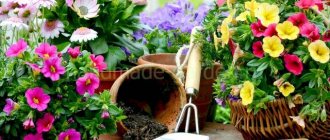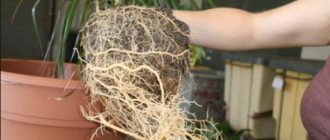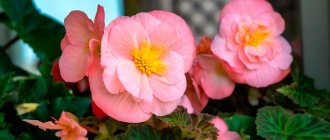Features of growing plants on eastern and western windows
If you are lucky with such windows, you just need to avoid gross mistakes in care: drafts, hypothermia or overheating of the earthen clod, as well as violations of the watering and fertilizing regime.
When discussing the importance of window orientation, you will have to take into account a significantly larger number of factors than are taken into account in this article. For example, geographic latitude: there is a big difference between a southern window somewhere in Tashkent or St. Petersburg. Or floor: the south window on the first floor, densely shaded by spreading maples, will be noticeably different from the same one on the sixteenth without a loggia.
The light-absorbing ability of glass, which increases as banal dirt accumulates on it. What if the double-glazed window is three-chamber and has not been washed from the outside for years, because this requires calling in industrial climbers?
If you think about it, you can choose plants for almost any window. The main recommendation that you can safely give, no matter what kind of windows you have, is to experiment, guided by your own common sense.
South windows
Growing plants on a south window is more troublesome than on a north window, since few plants will tolerate prolonged exposure to direct sunlight. Often, during the hottest time of the day, you will have to create shading, in the form of a gauze or tulle curtain. This is inconvenient because when you are at work, there is no one to do this and the plants may suffer.
Therefore, you need to especially carefully select plants for the windowsill of a south window. Only the most resistant plants that need sun can be placed on the windowsill itself, such as cacti and other succulents, hibiscus, adenium, passionflower, etc. If you read in the recommendations for caring for a plant that it loves light, but needs shading, then place it on a table near the south window under the protection of a tulle curtain. Such a place is ideal for such decorative deciduous flowers that need bright but diffused light, for example, ficus, arrowroot, myrtle, chamerops, cissus, coleus, hoya
Plants for the south window
Aloe, bocarnea, bouvardia, jasmine sambac, camellia japonica, coleus, coffee, laurel, mammillaria, prickly pear, oleander, sedum, Livistona sinensis, plectranthus, rheo, fuchsia, haworthia, cerius, echinocactus, yucca. It must be taken into account that each species of the same genus may have a different need for the sun, for example, some types of aloe grow well in a south-facing window, while some fade and the leaves become bluish.
Why do plants need light?
The question is simplest for those who know chemistry and biology. Today, only plants have been given the art of creating organic substances from water and air using light energy. During the process of photosynthesis in the leaves and stems of plants, with the participation of chlorophyll, glucose is formed from carbon dioxide and water, and then starch and other, more complex organic compounds. The energy contained in these substances owes its origin to sunlight.
Photosynthesis was discovered at the end of the 18th century. In 1771, the English chemist Joseph Priestley performed such an experiment. He put the mouse under a glass cover. Five hours later the mouse died. However, if there was a mint branch under the hood, it remained alive. From here Priestley concluded that animals with their breathing make the air unsuitable for the life of the body, and plants restore it with their breathing, i.e. make it suitable for life. However, the experience with the mouse was not always successful. The Dutchman Ingenhuis (1779) showed that an indispensable condition for a successful experiment is the presence of sunlight.
During the process of photosynthesis, plants not only develop and grow themselves, but also enable all living things on earth to breathe.
Indoor plants for all cardinal directions
Light is one of the main factors that have a beneficial effect on the growth and development of any plant. This is especially true for indoor crops, which are often grown under artificial lighting conditions.
The best light in the house is the area next to the window. Flowers located at a distance of more than 3 m from it receive 9 times less light. But before you decide where to put the next pot with a plant, you should know how much light each specific specimen needs:
1. Flowering species need much more lighting than those grown for decorative foliage;
2. Window sills where the sun is brightest are suitable for variegated forms
3. If you frequently move plants from one place to another, while changing the amount of light they receive, this can lead to negative consequences;
4. In winter, pots should be moved closer to the window. heat-loving species with special lamps, because they can be very cold near glass.
It is widely believed that northern windows provide too little light for flowers, southern ones “burn”, and eastern and western windows are optimal for placing indoor plants. What difficulties may arise with windows of one orientation or another?
The main problem with any windows, even southern ones, is the lack of lighting. Most indoor plants come from the subtropics and tropics, where the intensity of sunlight is significantly higher than even on the southernmost, tallest and cleanest windows in the middle zone.
Indoor flowers for northern windows
The lighting on the windowsill of a north-facing window is even, soft, without scorching, burning sun rays. This location is excellent for summer maintenance of indoor crops. Plants such as saintpaulia, cyclamen, hybrid gesneria, weltheimia, clivia, ophiopogon, and ruellia formosan .
North-facing windows are best suited for indoor flowers that are grown for their decorative foliage. Such representatives include: and fragrant dracaenas , zamiakulkas , arrowroot, monstera , various ferns, ivies, peperomia, sansevieria, scindapsus, ficus, philodendron , etc.
Problem
Lack of lighting, aggravating the “effect” of any flaws in care.
Possible solutions
Installation of additional lighting lamps, organization of at least point sources of additional lighting; selection of the most undemanding plants.
On northern windows, representatives of the family of araceae (philodendrons, zamioculcas), arrowroot, ferns (adiantum, nephrolepis), aspidistra, eucharis, cordylines, dracaenas can feel good; among the ficuses there are plenty of shade-tolerant species. And the unpretentious chlorophytum survives well even in city flower beds, and not just on windows.
Indoor flowers for south windows
Crops that tolerate heat and bright sunlight are suitable for southern windows. But even they will have to be protected from scorching and burning rays. To do this, you should use a screen made of gauze or white tissue paper. of cacti and succulents do not require shading, even in the strongest sunshine . They can be placed directly on the windowsill.
Cacti on the window
But for those who like bright, but not direct light, it is better to place it next to the window behind a tulle curtain. For example, you can put here abutilon , azalea, hibiscus, hippeastrum, zephyranthes, calceolaria, Coleus Blume, pelargonium, poinsettia, Pontine rhododendron, fuchsia, cyperus, etc.
Problem
Plants often dry out, look depressed, and may develop brown spots and dried out areas on the leaves.
Possible causes and solutions to problems
Overheating of roots in a pot. As a rule, the problem is not the direct sunlight itself, but the temperature to which the pot heats up under it. The solution may be ceramic reflective pots that prevent the pot with roots from overheating. When choosing a flowerpot, keep in mind that it is very desirable that the gap between the walls and the flowerpot is about a centimeter: this will provide an air gap that additionally protects against overheating.
Incorrectly adjusted watering. Plants on a south-facing window should be watered either early in the morning, before sunrise, or in the evening, after sunset, avoiding drops of water on the leaves when watering. If spraying is necessary, it is also done in the evening, after sunset.
Incorrectly selected plants. Most industrial hybrids are bred taking into account the fact that reduced lighting awaits them in apartments. Therefore, shade tolerance is one of the goals of selection. If you have just such plants, it may not hurt to use film, blinds or a light tulle curtain on the glass to shade them from the midday sun.
Well, and besides, in the summer plants can be placed not only on the window, but near it, which is especially good for large specimens.
Cacti and succulents will feel best on a south-facing window. But the possible range is not limited to them. Such a window is absolutely not suitable only for Saintpaulias, since at temperatures above 26°C they are susceptible to rapidly developing vascular diseases. For example, vascular bacteriosis, from which a violet can die within a day.
East and west windows
If you are lucky with such windows, you just need to avoid gross mistakes in care: drafts, hypothermia or overheating of the earthen clod, as well as violations of the watering and fertilizing regime.
When discussing the importance of window orientation, you will have to take into account a significantly larger number of factors than are taken into account in this article. For example, geographic latitude: there is a big difference between a southern window somewhere in Tashkent or St. Petersburg. Or floor: the south window on the first floor, densely shaded by spreading maples, will be noticeably different from the same one on the sixteenth without a loggia. The light-absorbing ability of glass, which increases as banal dirt accumulates on it. What if the double-glazed window is three-chamber and has not been washed from the outside for years, because this requires calling in industrial climbers?
If you think about it, you can choose plants for almost any window. The main recommendation that you can safely give, no matter what kind of windows you have, is to experiment, guided by your own common sense.
Indoor flowers for east windows
Windows oriented to the east allow you to create almost ideal conditions for growing shade-loving plants. The gentle morning sun gives way to soft diffused light in the afternoon. balsam, isolom, Ortgeza sorrel, Uzambara violet , various varieties of begonias , Japanese fatsia , etc. here
Indoor plants for western windows
Western window sills are lighter and warmer than eastern ones. Typically, plants located on them do not require shading from the hot midday sun. The following indoor flowers will feel comfortable here: asparagus, abutilon, crystal anthurium, royal begonia, gasteria, dracaena, bellflower, cordyline apex, dieffenbachia, schefflera, yucca, etc.
From various sources
Flowers on the windowsill: 4 cardinal directions
There is an opinion that not all windows are suitable for growing indoor plants. For example, plants on southern windows are destroyed by direct sunlight, while northern windows, on the contrary, give the flowers little light.
Beginning flower growers wonder why flowers do not grow fast enough, dry out, take root poorly, do not bloom, if they do everything exactly as prescribed - replant, fertilize, water... Yes, most likely, the problem really lies in the wrong choice of “place of residence” for the plants. Let's figure out which flowers will take root better on which side of the world.
South windows
When placing flowers on south-facing windows, make sure to place them in light-colored flowerpots for the summer, this will protect the plants from excessive overheating. You can also use porous ceramic pots. It is necessary to water flowers according to the rule of gardeners - at dawn or at sunset. If flowers require spraying, in the summer, remove drops of water from the leaves, because they, like lenses, can cause burns on the leaves. If the summer is too hot, it is enough to shade the window with a light tulle curtain or move the plants 1 m to the window table.
Southern flowers:
all types of succulents, almost all plants of the amaryllis family (hippeastrum, hemanthus, clivia, nerina, amaryllis, eucharis); Anthurium, pelargonium, fuchsia, balsam, hibiscus, and orchids - cattleya will bloom better on southern windows; decorative foliage plants (sansevieria, chlorophytum). Large plants are also very fond of the sun - Dieffenbachia, Dracaena, Monstera, all types of palms and ficuses; they should be placed closer to the southern windows.
East windows
Eastern windows are considered the most favorable for indoor plants. Direct sunlight reaches here only in the morning and the flowers develop under soft sunlight. In the southern regions, flowers will grow well on north-eastern windows, but if you are in the northern region, the most comfortable zone for plants in your home will be the south-eastern direction.
Oriental flowers:
begonia, alocasia, gardenia, arrowroot, poinsettia, zamioculcas, aphelandra, asparagus, philodendron, aechmea, tolmia, aeschynanthus, crossandra, achimenes, columnea, caladium, fatsia, crossandra, syngonium, coffee tree and ginger.
North windows
To make bright greenery pleasing to the eye, it is worth placing flowers on northern windows that do not suffer from a lack of light. There are more than enough such plants. For example, for comfortable growth of a pampered azalea, partial shade, cool and humid air is needed, so northern and north-western windows are best suited for it.
Northern flowers:
azalea, cyclamen, kalanchoe, anthurium, saintpaulia, some types of begonias, passionflower;
Of the tropical species, howea or date Lorera will take root well in the shade. West windows
Flowers growing on west windows receive sunlight at sunset. Unlike eastern rooms, where the temperature changes sharply throughout the day, here the temperature is always moderate. The only thing is that it is important to provide the plants with a natural flow of air through high-quality frames, since colder western rooms, as a rule, are not ventilated enough.
Western flowers:
schefflera, fuchsia, phalaenopsis, allamanda, medinilla, ragus, jacobinia, cycad, mandevilla, cyperus, neoregelia, saintpaulia, carmona, vriesia, grevillea, acalypha, pisonia, some types of ficus (including rubber ficus), spathiphyllum, tillandsia , jacaranda, oncidium, pigweed, pisonia, stephanotis, codiaum, pandanus, coconut.
Similar articles:
Flower business → How to do business smartly? Hire people to work less!
Travel → “Ship of Flowers” Mainau
All about flowers → The language of flowers. What do flowers mean
Flower business → Information about the flower business. Excerpt from my correspondence with Mikhail Oktysyuk
All about flowers → How to preserve flowers so they last longer
Features of growing plants on northern windows
Problem when growing plants on north-facing windows
Lack of lighting, aggravating the “effect” of any flaws in care.
Possible solutions
Installation of additional lighting lamps, organization of at least point sources of additional lighting; selection of the most undemanding plants.
What plants can be grown on northern windows?
On northern windows, representatives of the family of araceae (philodendrons, zamioculcas), arrowroot, ferns (adiantum, nephrolepis), aspidistra, eucharis, cordylines, dracaenas can feel good; among the ficuses there are plenty of shade-tolerant species. And the unpretentious chlorophytum survives well even in city flower beds, and not just on windows.
East side of the house
Suitable for planting Amur grapes, Siberian princelings, spirea, cotoneaster, aconite and muscari.
Amur grapes
A powerful deciduous vine that can entwine the tallest trees and hedges. The culture is frost-resistant and is grown even in the northern regions of Russia. The plant independently finds natural light, optimally positioning its leaves, and can be planted on the eastern side of the house.
Siberian princes
This plant has long been embraced by gardeners due to its impressive flowering that begins in late May. The prince is unpretentious to lighting conditions; in nature it can grow even in dense forest.
Spirea
A highly decorative shrub that blooms in spring or summer depending on the variety. The inflorescences are lush, usually white or pink.
cotoneaster
A very impressive and easy-to-care plant. Suitable for hedges. Does not require high illumination and artificial formation of the bush.
Aconite
An herbaceous perennial with tall stems and bright flowers, usually in shades of blue and purple. It will grow well in the eastern part of the garden plot.
Muscari
This wonderful herb will quickly become comfortable in low light conditions. Muscari is ready to fill the entire area in a short time. The inflorescences of the plant are racemose, mostly blue, but other shades are also found.
Lighting at different times of the year
A very important point: at different times of the year the intensity of sunlight in our windows is different, the whole year can be divided into two periods, for central Russia:
- From March to August, i.e. spring-summer - during these months all plants grow intensively, and most bloom. During this period, the sun can be very aggressive, and all the recommendations below on the content, or rather the correspondence of various plants to the cardinal directions, are given precisely for this period. When it comes to shading, this only applies to spring and summer.
- From September to February: period of passive sun, daylight hours are greatly reduced, the sun is low, plants naturally want to slow down their growth. But the problem is that they only “want”, “desire”, some “dream” - but usually they cannot, due to the fact that the temperature at home remains quite high due to the heating being on. Therefore, plants continue to grow (in the range of 14°C and above), but due to lack of light they become stretched and deformed. During this period, almost any plants can be safely placed without shading on the sunniest windowsill. They are not afraid of the sun on the southern window, because it shines rarely, short and the rays are slanting.










